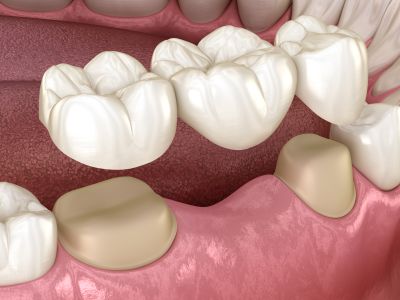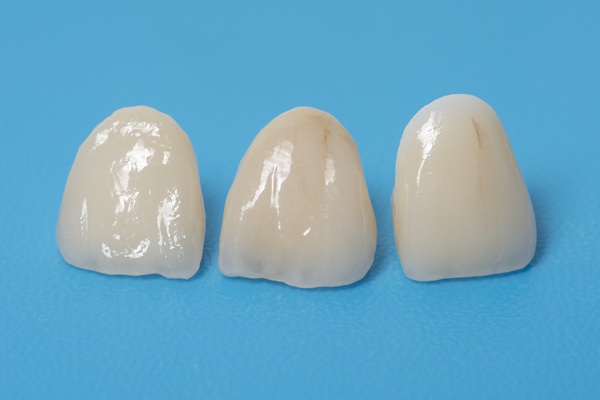Crown or Bridge? A Cosmetic Dentist Answers

There are many options available when it comes to dental care — including crowns and bridges. Below is some information to demystify the similarities and differences between dental crowns and bridges.
What is a dental crown?
Think of a dental crown as a hat that protects your head against the sun. It covers the entire tooth and protects it against damage and deterioration. Crowns are essential for restoring functionality to the tooth, ensuring that you can still bite and chew after suffering tooth damage. The dentist bonds crown permanently on the tooth to ensure regular brushing and flossing after the placement procedure.
There are different situations when a crown is necessary, and each is unique to the patient. The dentist will examine your condition and recommend suitable restoration options, including any advantages and disadvantages.
The following are situations where a dental crown is necessary:
- If a large portion of the tooth’s midriff is lost, a crown may be the alternative to avert possible fracture or future impairment.
- When a tooth suffers breakage or fracture, the crown can fortify the tooth structure during chewing and biting.
- If the fractured tooth breaks beneath the jawline from neglect and overuse, the tooth is irreparable and will need to be extracted.
- When the cusp (pointy edge) of the tooth is missing, a dental crown may be the only suitable alternative, since a filling is nearly impossible.
Crowns can also be used to improve the shape and appearance of crooked teeth without orthodontic treatment.
What is a bridge?
A bridge is three or more fused crowns. If one tooth between two other teeth gets lost, a bridge is the best restoration option for the lost tooth.
Dentists may recommend a bridge when the two adjacent teeth already have crowns and a prosthetic tooth lies in between. There is a gap beneath the pontic (false crown), but the bridge has a similar appearance and function as a healthy tooth.
Materials for dental crowns and bridges
Porcelain, gold alloy, metals or a combination of these materials can be used for manufacturing crowns and bridges. Each of the materials has its pros and cons. Factors to consider when choosing the material include strength, appearance, cost and durability. The dentist will discuss options with you during your appointment.
Gold is considered the strongest and most appropriate for heavy grinders, but the appearance is a significant drawback because it stands out. Porcelain crowns are of different types and usually have the best performance. The zirconia type is stronger and preferred for the back teeth. Feldspathic porcelain is usually used for front teeth.
Sometimes, porcelain can be infused with gold to make a crown that has the strength of gold and the aesthetics of porcelain.
How to care for bridges and crowns
Brushing a bridge is similar to brushing your normal teeth. Flossing is a tad more difficult. When flossing, a floss threader must be used to access the teeth crevices and under the pontic.
Request an appointment in our Milwaukee office here: https://www.esdmke.com.
Check out what others are saying about our dental services on Yelp: Dental Crowns and Dental Bridges.
Related Posts
Dental crowns are a reliable and durable solution for restoring the appearance and function of damaged teeth. While dental crowns are designed to last years, proper care and maintenance are essential for extending their lifespan. Following practical steps and working closely with your dentist can protect your investment and enjoy a confident smile for years.Maintaining…
Picking the right dental crowns might be hard, which is why you should understand a few questions to ask. If you want a cosmetic procedure, it might be even harder to choose the process for you. But if you do your research first, you can make the most informed decision possible. Keep reading to find…
Dental crowns are to thank for restoring teeth that are in bad shape. However, once they are placed, it is up to the patient to ensure that the crown does its job.There are a few things that dentists recommend once a dental crown has been placed. These recommendations can be extremely helpful when trying to…
Dental crowns are used in general dentistry very frequently as they are quite versatile. They can solve a number of problems ranging from a simple chip to a severe break. When considering dental restorations, it is worth looking into dental crowns. Outside of being versatile, they are offered in different materials, which can be helpful…


